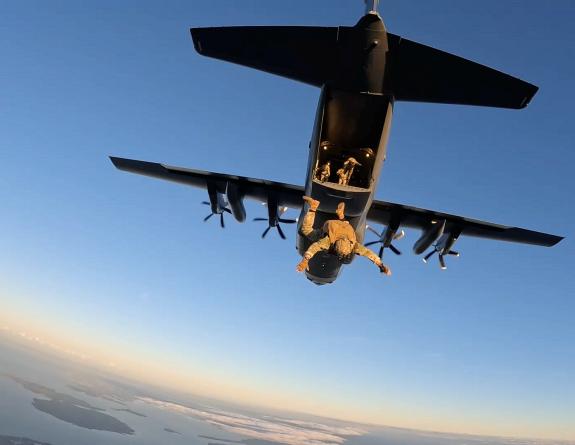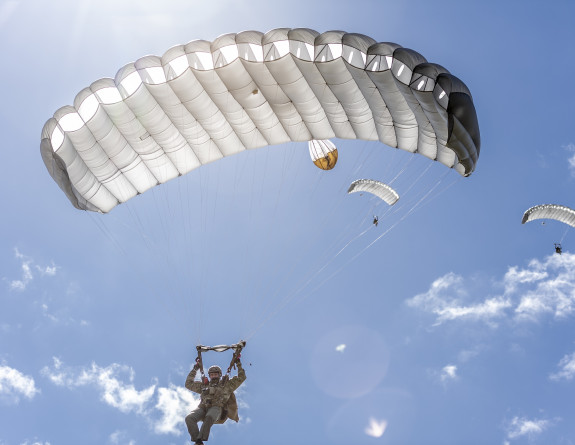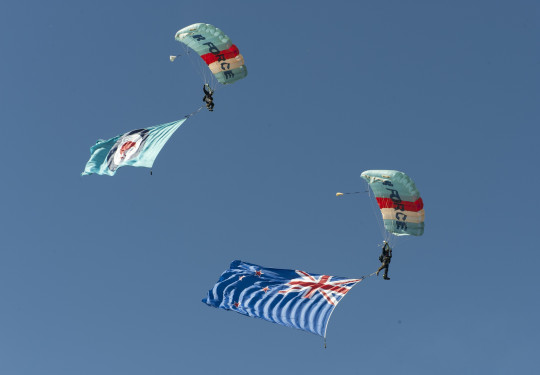RNZAF pilots pinpoint jumping areas with parachuting app
Royal New Zealand Air Force (RNZAF) pilots flying the new C-130J Hercules can now use cutting-edge technology to give more accurate information to parachutists performing high-altitude jumps.
30 July, 2025
RNZAF Base Auckland’s C-130J Transition Unit (JTU) worked closely with Hælix Ltd, the developers of the Ballistic app, and the United Kingdom Ministry of Defence's Royal Air Force (RAF) Digital team to adapt the app for RNZAF use.
Squadron Leader Luke Flemington was part of the RAF’s original project team when Ballistic was produced. Now he is the JTU’s trial and development manager and he realised the app was a perfect product for the team to use when calculating the moment parachutists leave the aircraft on high-altitude jumps.
“With roles changing from the earlier C-130H aircraft, there was a desire to introduce simpler methodology to effectively and accurately calculate protected release areas,” he said.
The original RAF product needed some adjustments to include RNZAF parachutes, and improvements to the stability of the application to meet RNZAF requirements. It was trialled successfully earlier this year on the C-130J by JTU and the Parachute Training and Support Unit.
“We now have the licence through the United Kingdom’s Defence Intellectual Property Rights department to be able to use it for the next two years.”


The RNZAF has adapted a parachuting app for its own use which will allow pilots to better identify the best time for parachutists to leave the aircraft.
Pilots have the ultimate responsibility to ensure parachutists are able to reach the drop zone and this app enables an accurate way of determining a safe release area for jumping, based on the performance and type of parachute used, Squadron Leader Flemington said.
“A round parachute can't fly but falls like an umbrella going down. That chute must be released at a specific point in space to drift with the wind onto the drop zone or the target.
“However, a rectangular chute can fly like a wing and can be released in a wider area called a Launch Acceptability Region (LAR). The Ballistic app allows us to calculate this LAR accurately based on the performance of the parachutes being used, while still enabling the parachutist the flexibility to determine their own release point within that area.
“We then programme the LAR and jumper release point into the aircraft's computers, which means we have mathematically ensured the jumper can make the descent safely.”
Ballistic was designed with the pilots in mind and has an intuitive graphical user interface that can be used on the Electronic Flight Bag devices they were already using, he said.
“This work has highlighted the benefits of cooperation between the RAF and the RNZAF in refining organically produced software through a common goal of capability enhancement, and has resulted in world-leading high-altitude parachuting procedures and methodology for both organisations,” Squadron Leader Flemington said.
